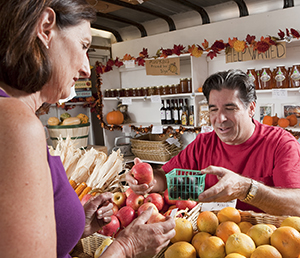A Mediterranean-style diet is a healthy way of eating, not a specific diet to lose weight. It includes a lot of foods from plants, such as vegetables, fruits, beans, nuts, seeds, whole grains, and olive oil. It also includes dairy foods, eggs, fish, and poultry, but in smaller amounts. Fish and poultry are eaten more often than red meat. This diet limits sugar, highly processed foods, refined carbohydrates, and processed meats. Many studies over time have shown health benefits to eating this way. It focuses on making meals with fresh foods that are plant-based and minimally processed.
This plan of eating is inspired by how people eat in countries around the Mediterranean Sea. They include Italy, Greece, Spain, Croatia, Morocco, and Turkey. But it uses foods you can buy in almost any grocery store.
Health benefits of a Mediterranean diet
This diet is high in fiber, lean protein, and healthy oils. It’s low in saturated fats and sugar. The diet has been shown to help prevent or manage:
-
Depression.
-
Diabetes.
-
Heart disease.
-
High blood pressure.
-
Parkinson disease.
-
Alzheimer disease.
-
Certain cancers.
What do I eat on a Mediterranean diet?
Plan each meal around vegetables and whole grains. Use olive oil. Add nuts and legumes. Include fish or lean protein. Foods to focus your meals around include:
|
Food type |
What to eat |
|
Vegetables |
This includes leafy greens, tomatoes, squash, peppers, cucumbers, green beans, eggplant, avocados, potatoes, and olives. You can use fresh or frozen vegetables. |
|
Fruits |
This includes apples, raspberries, strawberries, grapes, citrus fruit, such as oranges and grapefruit, stone fruit, such as apricots and peaches, plus figs, dates, and melon. |
|
Whole grains |
This includes brown rice, whole oats, quinoa, millet, whole-grain bread, whole-wheat pasta, and crackers made with whole grains. |
|
Beans and legumes |
These include lentils, chickpeas, and beans, such as pinto, fava, kidney, and black beans. Peanuts are also legumes. |
|
Nuts and seeds |
These include walnuts, almonds, sunflower seeds, cashews, Brazil nuts, and pecans. |
|
Healthy oil |
Olive oil is the most common oil in the Mediterranean diet. But other healthy oils are avocado, canola, sunflower, safflower, and corn oils. |
|
Herbs and spices |
Season food with oregano, pepper, sage, tarragon, thyme, basil, cinnamon, and cumin. |
Foods to limit or eat in smaller amounts
You can add these foods in smaller amounts:
-
Dairy foods, such as cheese, yogurt, and butter
-
Poultry, such as chicken and duck
-
Eggs
-
Fish and seafood such as salmon, trout, mackerel, haddock, tuna, sardines, anchovies, and whitefish. It also includes shellfish such as shrimp, oysters, mussels, and clams.
-
The American Heart Association advises to limit or have no alcohol. Wine may be OK for certain people in low or moderate amounts, with meals. Talk with your provider about your situation and risk.
Occasional treats
Limit these foods in your weekly eating plan:
-
Red meats, such as beef, lamb, and pork
-
Processed meats
-
Refined grains, such as white rice and foods made with white flour
-
Sugary treats, such as chocolate, candy, or pastries
Adding lots of flavor
You can liven up fresh foods with many different flavors. Try these sauces, dips, and seasonings:
-
Hummus
-
Marinara sauce
-
Salsa
-
Vinaigrette dressing
Tips for eating out
At restaurants:
-
Skip fried foods. These have a lot of saturated fat.
-
Look for fish dishes that are cooked without cream or butter.
-
Pick salads that have nuts and seeds.
-
Choose vegetarian choices that don’t have too much cheese.


